History of World TB Day
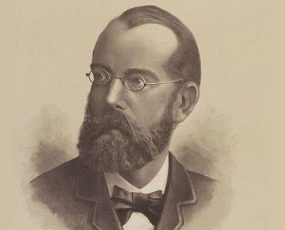
On March 24, 1882, Dr. Robert Koch announced the discovery of Mycobacterium tuberculosis, the bacteria that causes tuberculosis (TB). During this time, TB killed one out of every seven people living in the United States and Europe. Dr. Koch’s discovery was the most important step taken toward the control and elimination of this deadly disease. A century later, March 24 was designated World TB Day: a day to educate the public about the impact of TB around the world.
Until TB is eliminated, World TB Day won’t be a celebration. But it is a valuable opportunity to educate the public about the devastation caused by TB and how it can be stopped.
TB Chronicles

In 2018, as part of the “We Can Make History: End TB” World TB Day theme, CDC honored TB elimination leaders and history-makers through the TB Chronicles. The TB Chronicles depicted TB milestones that highlight both how far we have come and how far we must go towards ending TB.
What is in a name?
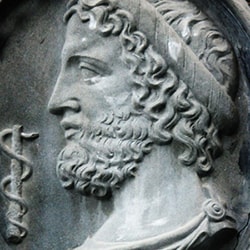
Johann Schonlein coined the term “tuberculosis” in the 1834, though it is estimated that Mycobacterium tuberculosis may have been around as long as 3 million years!
Tuberculosis (TB) was called “phthisis” in ancient Greece, “tabes” in ancient Rome, and “schachepheth” in ancient Hebrew. In the 1700s, TB was called “the white plague” due to the paleness of the patients. TB was commonly called “consumption” in the 1800s even after Schonlein named it tuberculosis. During this time, TB was also called the “Captain of all these men of death.”
During the Middle Ages, TB of the neck and lymph nodes was called “scrofula.” Scrofula was believed to be a different disease from TB in the lungs.
Today, our names for TB tell us where TB is located (pulmonary, extrapulmonary) and how to treat it (drug-susceptible, drug-resistant, multidrug resistant, and extensively drug-resistant.)
CDC and many organizations around the world are working towards a future where we call TB “history.”
TB is not just a disease found in humans.
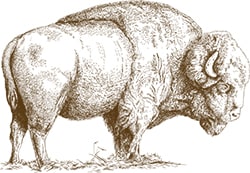
TB is a disease that infects animals as well as humans. Archeologists have found TB in the bones of ancient bison in Wyoming. These bison lived over 17,000 years ago.
Mycobacterium bovis (Bovine TB) can still be found in many animals in the United States including cattle and deer. Approximately 1 million cattle are tested each year for TB. The cattle at most risk for TB are those that come into contact with wildlife that carry TB (like deer). It is possible for some animals to transmit TB to humans.
TB has been part of the human experience for a long time.
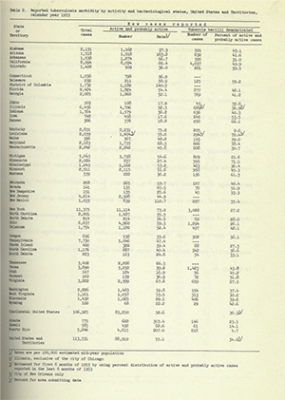
TB in humans can be traced back to 9,000 years ago in Atlit Yam, a city now under the Mediterranean Sea, off the coast of Israel. Archeologists found TB in the remains of a mother and child buried together. The earliest written mentions of TB were in India (3,300 years ago) and China (2,300 years ago).
Throughout the 1600-1800s in Europe, TB caused 25% of all deaths. Similar numbers occurred in the United States. In 1889, Dr. Hermann Biggs convinced the New York City Department of Health and Hygiene that doctors should report TB cases to the health department, leading to the first published report on TB in New York City in 1893. CDC published nationwide TB data for the first time in 1953, reporting 84,304 cases of TB in the United States.
CDC publishes TB surveillance data on an annual basis. TB disease is a nationally notifiable disease, however latent tuberculosis infection is not reported to CDC. CDC is researching ways to monitor latent TB infection on a national basis. CDC has a goal of TB elimination in the United States. Ending TB will require a dual approach of maintaining and strengthening current TB control priorities, while increasing efforts to identify and treat latent TB infection in populations at risk for TB disease.
Do vampires cause TB?

Before the discovery of the bacteria that causes TB, the disease was thought to be hereditary.
In the early 1800s, there were “vampire panics” throughout New England. When a TB outbreak occurred in a town, it was suspected that the first family member to die of TB came back as a vampire to infect the rest of the family. To stop the vampires, townspeople would dig up the suspected vampire grave and perform a ritual.
On March 24, 1882, Robert Koch announced his discovery that TB was caused by a bacteria in his presentation “Die Aetiologie der Tuberculose” at the Berlin Physiological Society conference. The discovery of the bacteria proved that TB was an infectious disease, not hereditary. In 1905, Koch won the Nobel Prize for Medicine and Physiology.
Today, we know TB is an airborne infectious disease, spread when a person with TB disease coughs, speaks, or sings. When a person is diagnosed with TB disease, a contact investigation is done to find and test people (like family members) who may have been exposed to TB. People diagnosed with TB disease or latent TB Infection are then treated.
New technologies like whole genome sequencing help public health professionals see patterns of TB transmission. This tool can help focus public health efforts to find and treat persons with TB disease and latent TB infection.
Finding TB is the first step towards ending TB
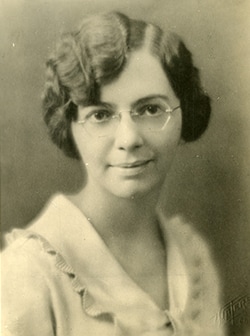
The TB skin test for TB infection measures a person’s immune response. The test is performed by injecting a small amount of fluid (called tuberculin) into the skin on the lower part of the arm. A health care worker “reads” the test 48-72 hours later.
The TB skin test was developed over time. In 1890, Robert Koch developed tuberculin (an extract of the TB bacilli) as a cure, though it proved to be ineffective. In 1907, Clemens von Pirquet developed a skin test that put a small amount of tuberculin under the skin and measured the body’s reaction. Pirquet also invented the term “latent TB infection” in 1909. In 1908, Charles Mantoux updated the skin test method by using a needle and syringe to inject the tuberculin.
In the 1930s, American Florence Seibert PhD developed a process to create a purified protein derivative of tuberculin (PPD) for the TB skin test. Prior to this, the tuberculin used in skin tests was not consistent or standardized. Seibert did not patent the technology, but the United States government adopted it in 1940.
The TB skin test is still used today and has remained virtually unchanged for almost eighty years. The test and PPD are still listed on the World Health Organization’s essential medicines list. A more recent advancement in TB testing has been TB blood tests, or interferon-gamma release assays (IGRAs).
Today, we use both TB skin tests and TB blood tests to diagnose TB infection. Additional tests, like x-rays, are needed to diagnose TB disease. When TB was more common in the United States, public health departments often used mobile x-ray vans to test for TB. Mobile clinics are still in use today.
Testing and treating those at risk for TB is a key function of TB control programs in the United States and around the world.
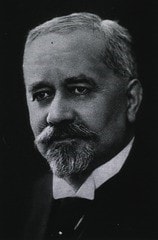
Albert Calmette and Jean-Marie Camille Guerin developed the Bacille Calmette-Guérin (BCG) vaccine in 1921. Prior to developing the BCG vaccine, Calmette developed the first antivenom to treat snake venom.
The BCG vaccine is not widely used in the United States, but it is often given to infants and small children to prevent TB meningitis in countries where TB is common. BCG does not always protect people from getting TB. TB blood tests are the preferred TB test for people who have received the BCG vaccine.
Vaccine research continues into the future. When a more effective TB vaccine is developed and deployed, it could reduce disease and death around the world.
Treatment remained largely unchanged until about 80 years ago
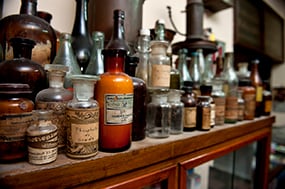
Until the discovery of antibiotics, treatment for TB was limited to warmth, rest, and good food… or “lana, letto, latte” in Italian.
In the Middle Ages, treatment for scofula (TB of the lymph nodes and neck) was the “royal touch.” People lined up for the royal touch of English and French kings and queens, hoping a touch from the sovereign would result in a cure.
Cod liver oil, vinegar massages, and inhaling hemlock or turpentine were all treatments for TB in the early 1800s.
Antibiotics were a major breakthrough in TB treatment. In 1943, Selman Waksman, Elizabeth Bugie, and Albert Schatz developed streptomycin. Waksman later received the 1952 Nobel Prize for Physiology and Medicine for this discovery.
Today, four drugs are used to treat TB disease: isoniazid (1951), pyrazinamide (1952), ethambutol (1961), and rifampin (1966). This 4-drug cocktail is still the most common treatment for drug-susceptible TB. In 2021, CDC released new interim guidance for a 4-month rifapentine-moxifloxacin treatment regimen to treat drug-susceptible TB disease that is as effective as the standard 6-month regimen for TB treatment.
In addition to treating TB disease, we can treat latent TB infection to prevent the development of TB disease in the future. In 2020, CDC and the National Tuberculosis Controllers Association (NTCA) published new guidelines for the treatment of latent TB infection. CDC and NTCA preferentially recommend short-course, rifamycin-based, 3- or 4-month latent TB infection treatment regimens over 6- or 9-month isoniazid monotherapy.
Isolating people and proper nutrition was the best TB medicine before antibiotics
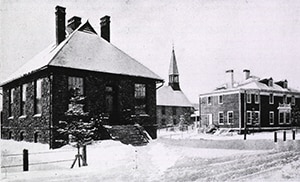
TB sanatoriums were places that provided treatment for TB patients and took the patients out of their home, which reduced the chance to spread TB to their families. Patients were treated for TB with fresh air, good food and sometimes surgery. America built many sanatoriums to care for persons with TB. In 1904, there were 115 sanatoriums with the capacity for 8,000 patients expanding to 839 sanatoriums with the capacity for 136,000 patients in 1953.
In 1875, Joseph Gleitsmann opened the first sanatorium in the United States in Asheville, North Carolina. Edward Livingston Trudeau (who had TB disease himself) opened the second, Adirondack Cottage Sanatorium, in Saranac, New York in 1884. In 1894, Trudeau built the first laboratory in the United States for the research of TB. He later died from TB disease.
In 1907, Emily Bissel, a social worker, wanted to help raise money for a local sanatorium. She designed the first “Christmas Seals” stamp and sold them for a penny. The first year, she raised $3,000 – 10 times what she hoped to collect! This began the tradition of selling Christmas Seals to raise money for TB sanatoriums.
In the 1950s, a study performed in Madras, India showed that with proper drug therapy, TB patients could be treated at home. Today, public health workers around the country visit patients wherever they are to deliver and monitor TB treatment. Some public health departments are now using video technology to visit TB patients electronically through webcams or smartphones.
Dedicated people, agencies, and organizations continue the fight to end TB.
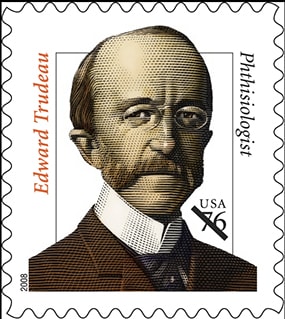
Edward Trudeau founded the American Sanatorium Society in 1905 and the National Association for the Study and Prevention of TB in 1904. These organizations eventually became the American Thoracic Society and the American Lung Association, and continue to research and fight TB today.
A resurgence of TB disease in the early 1990s led to the publication of “Ending Neglect” in 2000 by the Institute of Medicine. The publication was a watershed event for TB control in the United States. The report outlined steps needed to eliminate TB in the United States.
In addition to CDC and public health departments around the country, the National TB Controllers Association, Stop TB USA, We Are TB, the TB Elimination Alliance, American Thoracic Society, the American Lung Association and many local organizations work to help people with TB and to eliminate TB in the United States. In 2016, the United States Preventive Service Task Force released guidelines on target testing and treatment of latent TB infection to prevent future cases of TB. Epidemiology and modeling studies suggest that the United States can only reach its goal of TB elimination if the strategy includes a major increase in latent TB infection testing and treatment.
American Lung Association. The History of Christmas Seals. http://www.christmasseals.org/history/ Accessed Feb 13 2018.
Barberis, I., Bragazzi, NL., Galluzzo, M., Martini, M.. The history of tuberculosis: from the first historical records to the isolation of Koch’s bacillus. J Prev Med Hyg. 2017; 58:E9-E12
Daniel, Thomas M. The history of tuberculosis. Respiratory Medicine. 2006; 100:862-1870
Daniel, Thomas M. Florence Barbara Seibert and purified protein derivative. Int J Tuberc Lung Dis. 2007; 13(3):281-282
Daniel, TM and Iversen, PA. Hippocrates and tuberculosis. Int J Tuberc Lung Dis. 2015; 19(4):373–374
Eddy, Jared J. The ancient city of Rome, its Empire, and the spread of tuberculosis in Europe. Tuberculosis. 2015; 95:S23-S28
Fogel, Nicole. Tuberculosis: A disease without boundaries. Tuberculosis 2015; 95:527-531
Frith, John. History of Tuberculosis. Part 1 – Phthisis, consumption and the White Plague. Journal of Military and Veteran’s Health. 2014; 22(2):29-35
Institute of Medicine. Ending Neglect: The Elimination of Tuberculosis in the United States. Washington D.C., United States: National Academy Press; 2000
Lougheed, Kathryn. Catching Breath: The Making and Unmaking of Tuberculosis. London, Great Britain: Bloomsbury Sigma Publishing; 2017
Murray, JF., Schraufnagel, DE., Hopewell, PC.. Treatment of Tuberculosis: A Historical Perspective. Ann Am Thorac Soc. 2015; 12(12):1749-1759
Patterson, S., Drewe, JA., Pfeiffer, DU, Clutton-Brock, TH,. Social and environmental factors affect tuberculosis related mortaility in wild meerkats. Journal of Animal Ecology> 2017; 86:442-450.
Perrin, Pascale. Himan and tuberculosis co-evolution: An integrative view. Tuberculosis. 2015; 95:S112-S116
Reibman, J., Rom, WN.. The History of the Bellevue Hospital Chest Service (1903-2015). AnnalsATS. 2015; 12(10):1438-1446
Riva, Michele A. From milk to rifampicin and back again: history of failures and successes in the treatment for tuberculosis. Journal of Antibiotics. 2014; 67:661-665
Rothschild, BM, Martin, LD, Lev, G, Bercovier, H, Bar-Gal, GK, Greenblatt,C, Donoghue, H, Spigelman, M, Brittain, D. Mycobacterium tuberculosis Complex DNA from an Extinct Bison Dated 17,000 Years before the Present. Clinical Infectious Diseases. 2001; 33:305–11
Ruggerio, Dan. A Glimpse at the Colorful History of TB: Its Toll and Its Effect on the U.S. and the World. TB Notes 2000. U.S. Department of Health and Human Services, Centers for Disease Control and Prevention; 2000 Atlanta GA.
Towey, Francesca. Historical Profile Leon Charles Albert Calmette and Jean-Marie Camille Guerin. The Lancet. 2015; 3:186-187
Tucker, Abigail. The Great New England Vampire Panic. Smithsonian.com. https://www.smithsonianmag.com/history/the-great-new-england-vampire-panic-36482878/ . Accessed Feb 2018.
United States Department of Agriculture Animal and Plant Health Inspection Service. Bovine Tuberculosis Disease Information. https://www.aphis.usda.gov/aphis/ourfocus/animalhealth/animal-disease-information/cattle-disease-information/sa_tuberculosis/ct_bovine_tuberculosis_disease_information. Accessed Feb 15 2018.